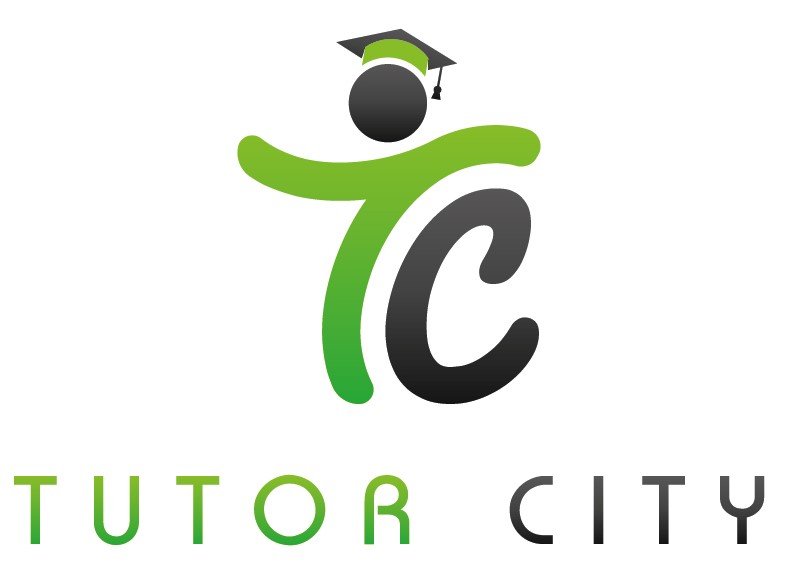
- Published by: Tutor City
- June 06, 2025
- Technology
The Microlearning Revolution: How Bite-Sized Content is Reshaping Educational SEO in 2025
The days of hour-long lectures holding student attention are fading fast. Something fundamental is shifting in classrooms and online platforms across Singapore and beyond. Microlearning, the practice of delivering educational content in digestible 2-15 minute segments, isn't just changing how students learn. It's fundamentally altering how educational content gets discovered, consumed, and ranked by search engines.
This shift represents more than a pedagogical trend. For educators, tutoring agencies, and educational content creators, understanding the intersection of microlearning and search engine optimization has become critical for reaching today's digitally native learners.
The Science Behind Shrinking Attention Spans
Recent research reveals a startling reality about modern learning habits. The average human attention span has declined from 12 seconds in 2000 to just 8 seconds today, shorter than a goldfish's 9-second attention span. For Generation Z students, who will comprise over 25% of the global workforce by 2025, this attention fragmentation isn't a limitation. It's their natural learning rhythm.
Educational institutions worldwide are responding to this shift. Studies show that 67% of students report gamified learning to be more motivating than traditional courses, while microlearning breaks down complex information into manageable, bite-sized pieces, making it easier for learners to retain.
But here's what most educators miss: search engines are evolving alongside these learning preferences. Google's algorithms increasingly favor content that matches user behavior patterns, rewarding bite-sized, easily digestible content that delivers immediate value.
Why Search Engines Love Microlearning Content
Search engines like Google prioritize content that serves users efficiently. Microlearning content naturally aligns with several key ranking factors that educational content creators often overlook:
Reduced Bounce Rates: When students find exactly what they need in a 3-minute video or interactive module, they're more likely to engage fully rather than click away. Lower bounce rates signal to search engines that your content satisfies user intent.
Increased Session Duration Through Content Series: While individual microlearning modules are short, they often encourage binge consumption. Students who complete one module frequently continue to related content, extending their overall session time on your platform.
Enhanced Mobile Experience: Over 60% of learners prefer personalized, timely content and more than 56% learn on-demand. Microlearning content loads quickly and displays perfectly on mobile devices, meeting Google's mobile-first indexing requirements.
Voice Search Optimization: As voice searches become more common in educational contexts, microlearning content's concise, question-answering format aligns perfectly with how students ask questions verbally.
The Content Fragmentation Strategy That Actually Works
Traditional educational content strategy focuses on comprehensive, authoritative, long-form pieces. While these remain valuable, successful educational content creators in 2025 are mastering a hybrid approach that leverages microlearning for discovery and engagement.
Consider how Singapore's most successful tutoring platforms structure their content. Instead of publishing a single 3,000-word guide on "Mastering O-Level Mathematics," they create interconnected microlearning modules: "Solving Quadratic Equations in 5 Minutes," "Geometry Shortcuts Every Student Needs," and "Calculator Tricks for Faster Problem Solving."
Each module targets specific search queries while contributing to broader topic authority. This approach captures both the student seeking quick help with tonight's homework and the parent researching comprehensive math support.
Microlearning's SEO Superpowers
The search engine benefits of microlearning extend far beyond traditional metrics. Educational content that embraces microlearning principles gains several competitive advantages:
Featured Snippet Optimization: Google's featured snippets typically display 40-50 words. Microlearning content, designed for quick consumption, naturally fits these constraints. Educational content creators who structure lessons as step-by-step microlearning modules frequently earn these coveted "position zero" rankings.
Video Search Dominance: YouTube, the world's second-largest search engine, heavily favors educational videos under 10 minutes. According to one prediction, mobile learning will become the microlearning mode of choice by 2025. Educational creators who master short-form video content often dominate their subject areas.
Long-tail Keyword Capture: Microlearning modules excel at targeting specific, long-tail keywords that reflect real student queries. Instead of competing for "physics," you can rank for "why do objects fall at the same rate" with a focused 5-minute explanation.
The Social Search Factor
A significant shift is occurring in how students discover educational content. Social platforms like TikTok and Instagram have become primary search engines for Gen Z learners. This trend directly benefits microlearning content, which translates naturally to social media formats.
Educational content creators who develop microlearning modules can easily adapt their content for social discovery. A 7-minute "Grammar Rules Explained" module becomes a series of engaging TikTok videos, Instagram reels, and YouTube Shorts, each driving traffic back to the original educational platform.
Building an SEO-Optimized Microlearning Content Strategy
Successful educational content creators in 2025 follow a systematic approach to microlearning content development that maximizes both educational impact and search visibility.
Start with Student Questions: Use tools like Answer the Public and Google's "People Also Ask" feature to identify specific questions students ask about your subject area. Each question becomes a potential microlearning module.
Create Content Clusters: Group-related microlearning modules around broader topics. This cluster approach helps establish topical authority while providing clear learning pathways for students.
Optimize for Multiple Formats: Develop each microlearning concept across multiple formats. A single concept might become a short video, an infographic, a quiz, and a text-based explanation. This multi-format approach captures different learning preferences while maximizing keyword coverage.
Implement Strategic Internal Linking: Connect microlearning modules through thoughtful internal linking. This approach helps search engines understand content relationships while guiding students through logical learning progressions.
The most successful educational platforms recognize that effective content marketing involves striking a balance between educational value and discoverability. Microlearning content naturally achieves this balance by delivering immediate value while supporting broader educational goals.
Measuring Microlearning Content Success
Traditional educational content metrics don't fully capture microlearning effectiveness. Successful content creators track both educational and SEO metrics to optimize their approach.
Completion Rates: Unlike traditional long-form content, microlearning modules should achieve 80%+ completion rates. Lower completion rates often indicate content that's still too complex or lengthy.
Knowledge Retention Metrics: Track how well students retain information from microlearning modules compared to traditional content. Many educational platforms see 25-60% better retention with properly designed microlearning content.
Search Performance Across Modules: Monitor how different microlearning modules perform in search results. Successful modules often share common characteristics that can be applied to future content development.
Cross-Platform Engagement: Measure how microlearning content performs across different platforms and formats. High-performing content on one platform often indicates successful adaptation opportunities.
The Future of Educational Content Discovery
As we advance through 2025, the convergence of microlearning and SEO will become even more pronounced. Artificial intelligence is making search engines better at understanding educational content context and matching it to specific learning needs.
Educational content creators who master microlearning principles now will be positioned to benefit from these algorithmic improvements. Search engines increasingly favor content that demonstrates clear educational outcomes and efficient knowledge transfer, exactly what well-designed microlearning provides.
The most forward-thinking educational platforms are already experimenting with AI-powered microlearning content that adapts based on individual student search patterns and learning preferences. This personalization capability, combined with strong SEO fundamentals, creates powerful competitive advantages.
Implementation Without Overwhelm
Many educational content creators feel overwhelmed by the prospect of restructuring their content strategy around microlearning. The key is gradual implementation that builds on existing strengths.
Start by identifying your most popular long-form content and extracting key concepts that could work as standalone microlearning modules. Often, a comprehensive guide contains 8-12 distinct concepts that could each support individual modules.
Test microlearning modules in low-risk environments first. Create a series of short modules around a single topic and measure both student engagement and search performance compared to traditional content.
Focus on subjects where students frequently seek quick answers or skill reinforcement. These areas naturally benefit from microlearning approaches and often see immediate SEO improvements.
The Competitive Edge of Early Adoption
Educational content creators who embrace microlearning-optimized SEO strategies now position themselves ahead of competitors still relying on traditional approaches. As research has shown that the average human attention span has been decreasing over the years, content that works with these changes rather than against them will continue to gain market share.
The most successful educational platforms of 2025 will be those that seamlessly blend pedagogical effectiveness with content discoverability. Microlearning provides the framework for achieving both goals simultaneously.
Students benefit from more focused, digestible learning experiences that fit their natural attention patterns. Search engines reward content that efficiently serves user needs. Educational content creators gain better search rankings, higher engagement rates, and improved learning outcomes.
Looking Ahead: The Microlearning-SEO Partnership
The relationship between microlearning and SEO will only strengthen as both fields continue evolving. Search engines are becoming more sophisticated at understanding educational intent and measuring content effectiveness beyond traditional metrics.
Educational content creators who invest in microlearning approaches now are building the foundation for long-term success in an increasingly competitive digital education landscape. The key is understanding that microlearning isn't about making content shorter. It's about making content more focused, more discoverable, and more effective at achieving specific learning objectives.
As the educational content landscape continues evolving, those who master the intersection of microlearning and SEO will find themselves at the forefront of how knowledge gets discovered, consumed, and applied in our digital age.
The shift toward microlearning and SEO integration is happening now. The question isn't whether microlearning will reshape educational content strategy, but how quickly educational content creators will adapt to capture the opportunities it presents.






